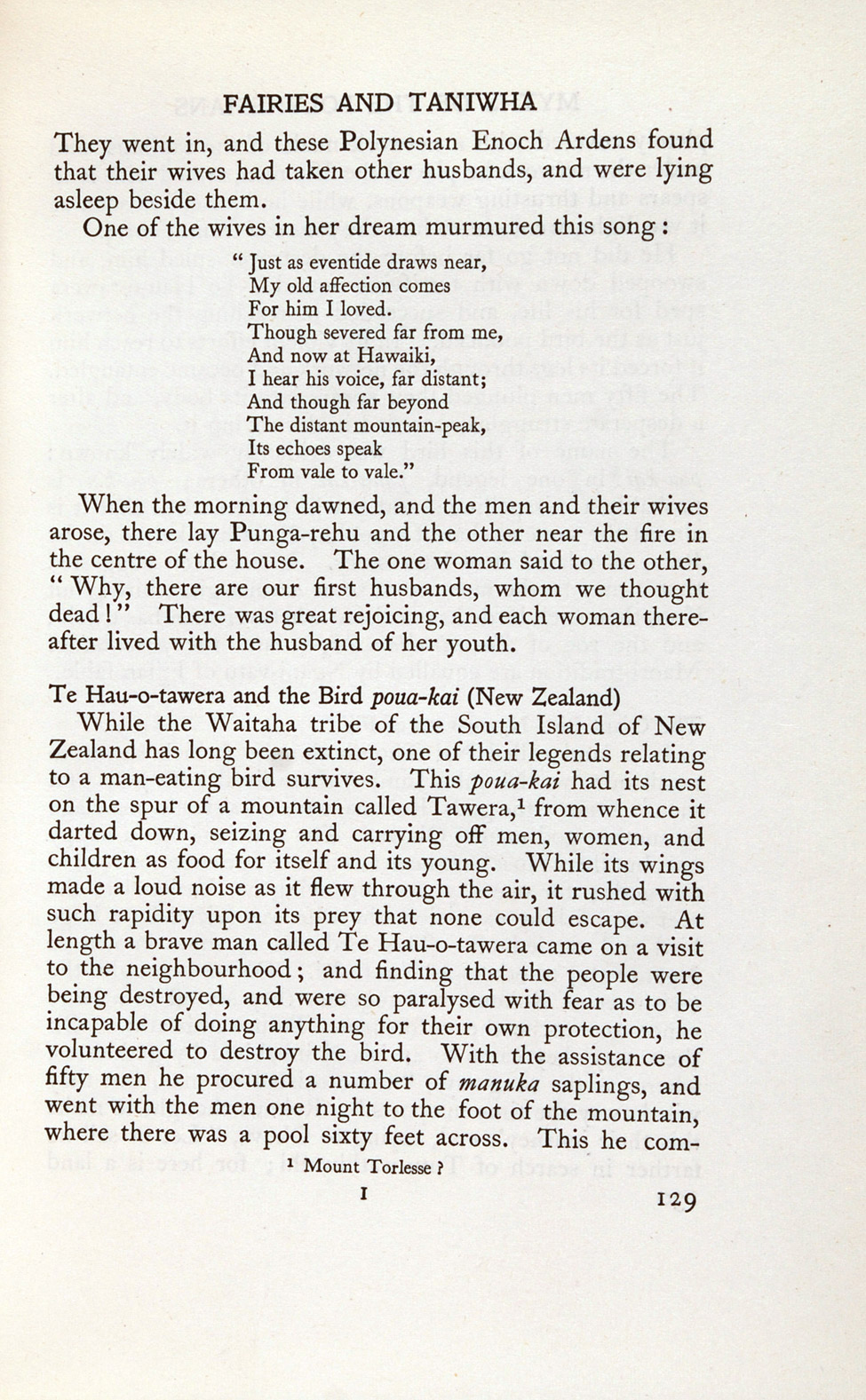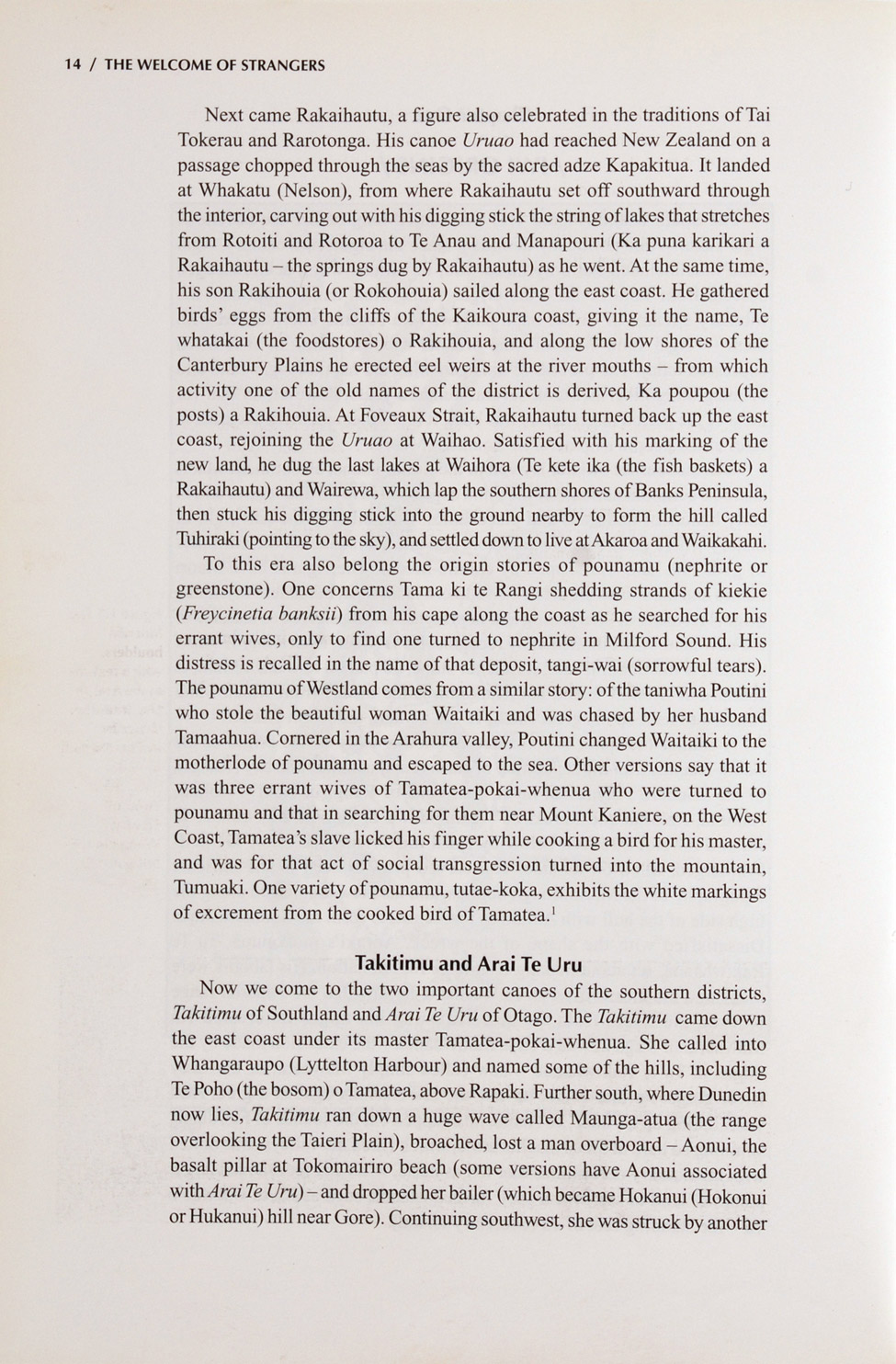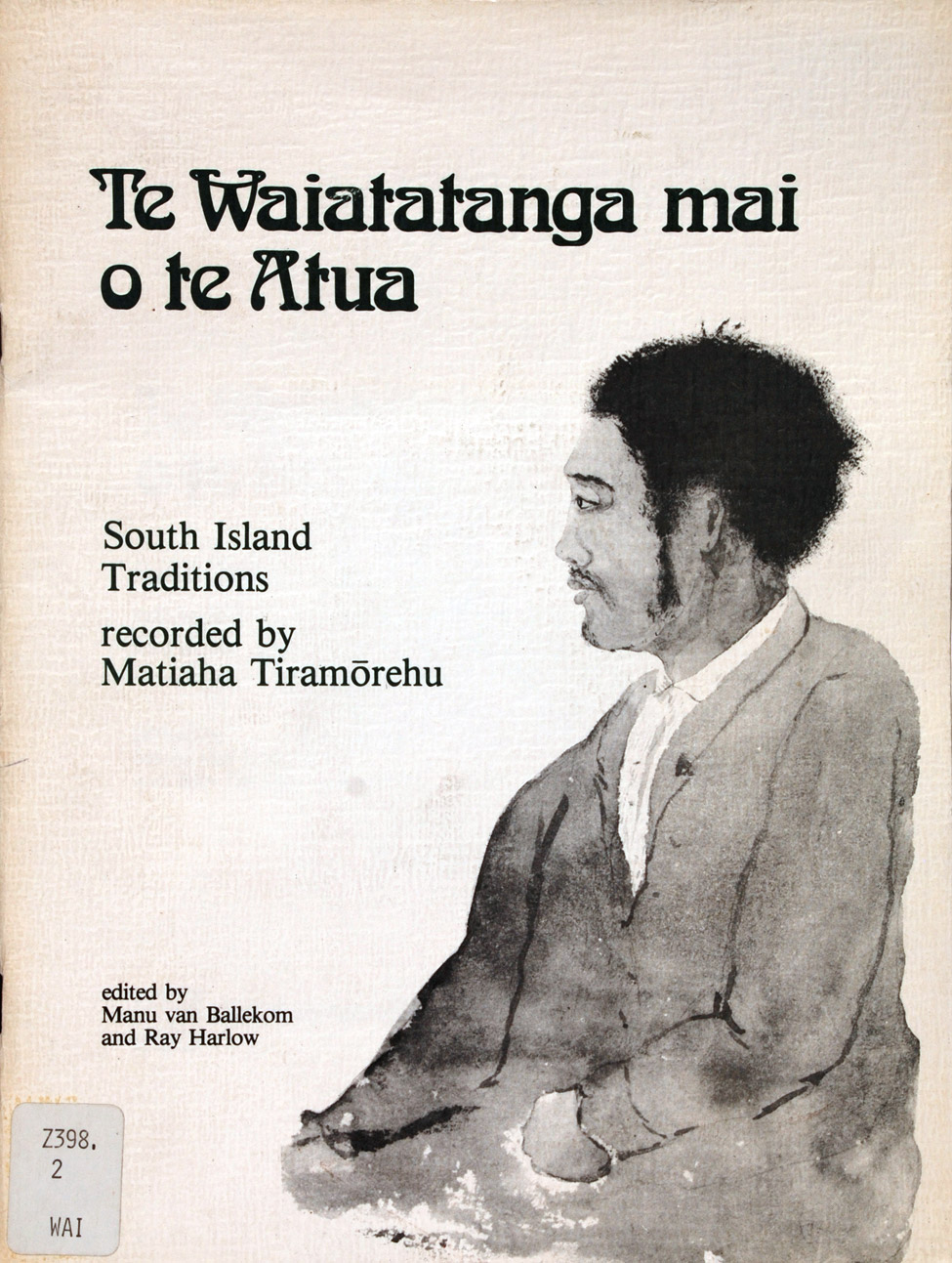Case 7
- Southern Traditions

Johannes C. Andersen. Myths & Legends of the Polynesians … With Sixteen Plates in Colour by Richard Wallwork. London: George Harrap & Company Ltd., 1928.
The traditions of Southern Maori, as for other iwi (tribes) have seldom been published in separate volumes, in their own right, but have appeared in more general collections. Some of the items featured in other cases showcase Southern stories, but in Cases 11 and 12, we show volumes that are specifically of Southern origin.
Myths and Legends of the Polynesians is an example from the ethnographic collection style. On display is a story from Waitaha. Note the erroneous assertion that the Waitaha tribe ‘has long been extinct’. Many Māori today still proudly proclaim Waitaha as their iwi.

Johannes C. Andersen. Myths & Legends of the Polynesians … With Sixteen Plates in Colour by Richard Wallwork. London: George Harrap & Company Ltd., 1928.
Open image in new window

Atholl Anderson. The Welcome of Strangers: An Ethnohistory of Southern Maori A. D. 1650–1850. Dunedin: University of Otago Press, 1998.
Atholl Anderson’s work is an ethno history of southern Māori, and provides a historical context to what the Western world has interpreted as myth and legend.

Atholl Anderson. The Welcome of Strangers: An Ethnohistory of Southern Maori A. D. 1650–1850. Dunedin: University of Otago Press, 1998.
Open image in new window

Manu van Ballekom and Ray Harlow (eds.). Te Waiatatanga mai o te Atua: South Island Traditions recorded by Matiaha Tiramōrehu. Christchurch: Department of Maori, University of Canterbury, 1987.
Te Waiatatanga mai o te Atua is a transcription and translation of a manuscript recorded by Matiaha Tiramōrehu of Moeraki in 1849. Tiramōrehu was a descendent of Tūahuriri, from the Kaiapohia (Kaiapoi) area, who moved to Moeraki after the battles against Ngāti Toa.

Manu van Ballekom and Ray Harlow (eds.). Te Waiatatanga mai o te Atua: South Island Traditions recorded by Matiaha Tiramōrehu. Christchurch: Department of Maori, University of Canterbury, 1987.
Open image in new window



